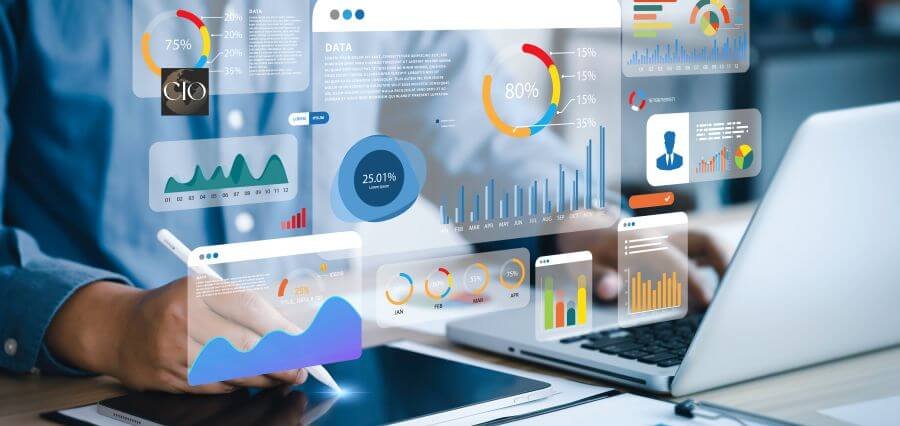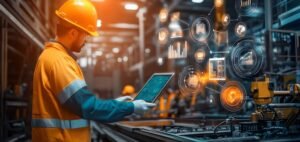TechEvolution
The current climate has placed unprecedented pressure on global supply chains, including the effects of geopolitical tensions, the climate crisis, labor shortages, and shifting consumer demand. As a result of the complexity, organizations are abandoning reactive and manual processes and moving towards intelligent and technology-led systems. Data analytics and Artificial Intelligence (AI) occupy pole position in this transformation, and they also allow networks to increase their assessment rates, be more adjusted and dynamic, and smarter.
The Foundation: Data Analytics as the Bedrock
Businesses have been generating enormous volumes of both structured and unstructured data through their supply chains, such as their sales, IoT sensor data, supplier data, weather forecasts, and social media indicators. Data analytics converts this raw data into actionable intelligence. Advanced analytics are capable of providing exposure to inventory, vendor statistics, and transportation data so that companies can make informed decisions.
The initial phases of optimization rely on analytics, with time-series analysis, regression models, and clustering techniques used to determine demand patterns or suppliers expected to be risky. It also alerts to anomalies, for example, inventory differences or late shipments. Good data analytics is one way to provide high-quality inputs into AI models, which supports precise optimization results.
Demand Forecasting and Inventory Optimization
It is vital to get an accurate prediction of the demand. The historical models of forecasting tend to be unable to respond to the new circumstances. The current demand forecasting techniques use AI to read past sales, trending figures, promotions, economic indicators, and extrinsic indicators (e.g., weather or social sentiment), yielding much more accurate forecasts. As an example, Amazon had to process more than 400 million product-demand forecasts during the holidays with AI, and other major retailers such as Target and Walmart presumably doubled or substantially expanded the coverage of AI-based forecasting of inventory to avoid stockout and overstocking.
AI complements inventory optimization through ideal reorder point calculation, regulation of stock item counts at any location, and anticipating dead or dormant inventory. The dynamic inventory allocations across Walmart regions guarantee that the seasonal products are relevant to the localized needs, thus minimizing waste and maximizing customer satisfaction.
Logistics, Route Optimization, and Control Towers
Some of the notable cost levers in supply chains include transport and logistics. Route optimization with AI examines actual traffic, weather, delivery limits, and fleet occurrence to establish effective routing plans, reducing transit time, fuel use, and carbon emissions. An example is the ORION system developed by UPS, which has returned millions of gallons of fuel each year, and providers such as DHL and Project44 are using AI-enabled platforms to provide real-time end-to-end visibility akin to a control tower, highlighting where things are going wrong and providing a proposed course of action.
Predictive Maintenance and Warehouse Automation
Minimal disruptions are needed in equipment-tight operations. Predictive maintenance systems supported by AI detect the need to take maintenance measures on a machine by analyzing sensor readings of the machine, such as vibrations, temperature readings, and usage trends. Implementation of such systems has helped companies such as Siemens to cut unplanned downtime by almost 30 percent. Within warehouses, data analytics is used to plan layout structure and staffing. Robotics and computer vision systems employ AI to control picking, packing, replenishment, and navigation sections, enhance throughput, reduce errors, and increase labor productivity by 30-35% at some installations.
Implementation Challenges and Best Practices
Although there are positive aspects, businesses encounter obstacles. The performance of AI and analytics systems is based on clearly defined, high-quality data. Legacy systems are a significant barrier to integration, and there is a lack of skilled resources in the analytics/ML space. Smaller firms may not be able to afford the initial development and the infrastructure costs. Industry professionals suggest beginning with modest—with clear, narrow use cases such as demand forecasting or route optimization—and building slowly, with good data governance and buy-in by stakeholders.
Future Outlook: From Reactive to Autonomous
The path forward is obvious: AI and data analytics will become face-forward instead of back-scratching tools. Future systems will automatically indicate stockouts, automatically place orders, and adjust logistics depending on real-time situations, analysts predict. In the longer term, macroeconomic forecasting would inform inventory rules to shift the industry towards a more proactive and resilient operation.
Final Words
The key to realizing the potential that Artificial Intelligence has to offer in optimizing the supply chain is data analytics. Collectively, they enhance visibility, velocity, efficiency, and resilience- making the conventional supply chains smart and agile webs. With the ever-increasing usage of these tools, including demand forecasting, robotics, and GNN-based visibility platforms, the whole industry of supply chain management is entering a new era of dynamism and sustainability. The secret to success is the ability to pursue a fortified data governance and strategic AI implementation, one small step at a time, until the company has completely autonomous and data-driven operations.
Read More : World’s Most Visionary Retired Professor Shaping the Future




